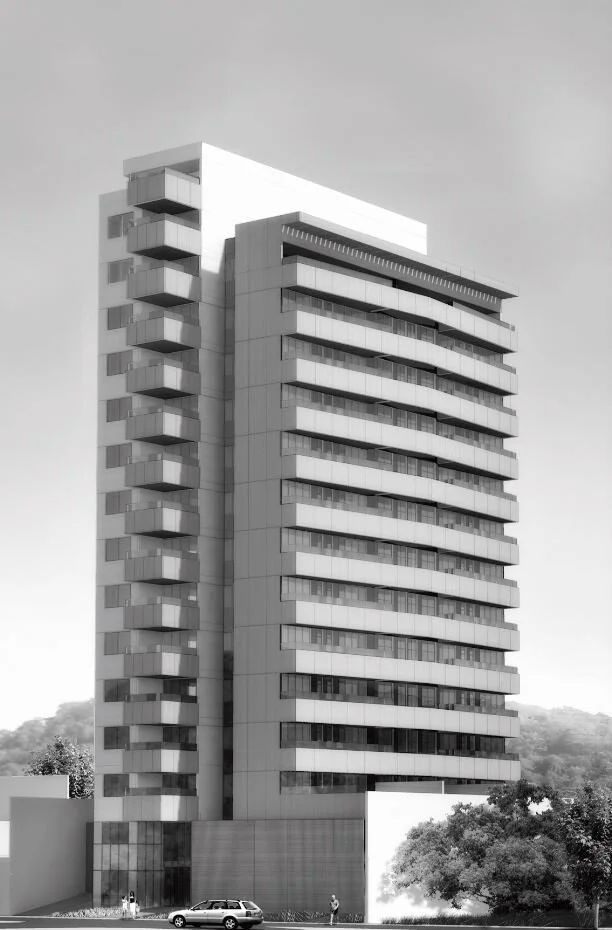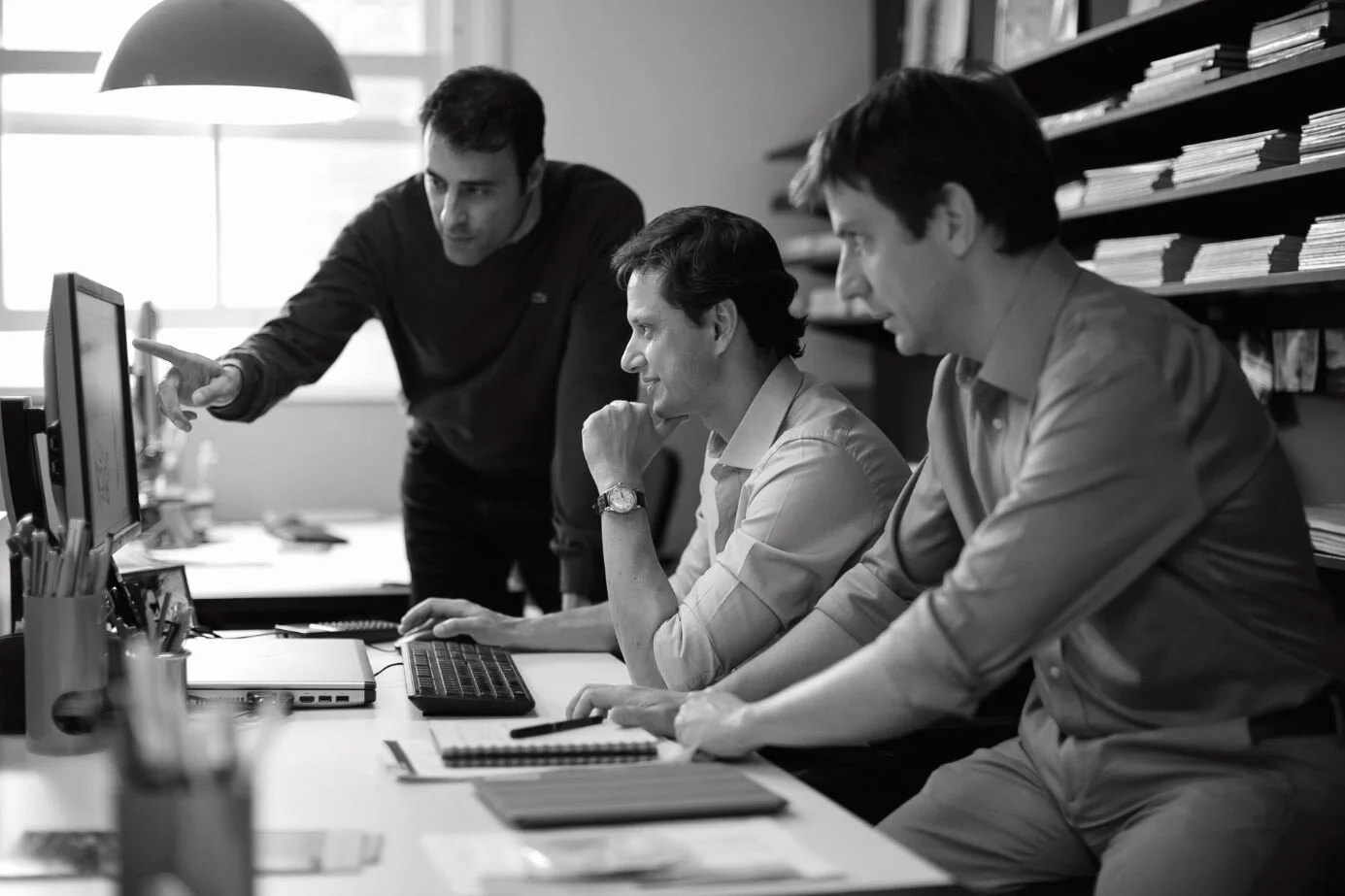LOOMING HORIZONS
LOOMING HORIZONS
(Orinaly published in the book “Horizontes Arquitetura e Urbanismo I | Projetos de 2002 a 2017” - LUA LAB Laboratório de Urbanismo Avançado e Nhamerica Plataforma)
Eduardo França. Licensed Architect and Urbanist. Master’s degree at UFMG. Professor at UNA University. Partner in the office Estudio Arquitetura.
Curiously contradictory is what I consider a good title for the performance of architects and urbanists who run their own office. If I need to be more specific in order to make such an analysis, I have to point out that I’m making this statement having in mind Brazilian professionals from the end of the 20th century to the beginning of the 21st.
Usually, I dare say, schools of architecture, apart from providing us with a certain group of skills related to the industry, also try to train professionals who constantly question the reality of the surrounding territory through a critical point of view, and try to understand cultural phenomena our society is based on. Generally speaking, the development of the Brazilian urban spaces goes through concepts well known to both architects and urbanists, like real-estate speculation, gentrification or environmental balance.
On one hand the knowledge of such concepts helps with the development of a well documented and convincing criticism on cities and their potential, and on the other hand it makes us realise the following: conceiving and developing projects and plans, both architectural and urbanistic, is sometimes like navigating in restless waters full of contradictions. In other words, how can you respond to a market that usually doesn’t care if a better architecture is available to the city and the citizens?
The question above has been echoing in my he ad since I set up my first office, even before graduating. In 2004 we certainly were more analogue than digital, at least as far as communication on line and just-in-time was concerned, and social networks were just a novelty, inducing a kind of technological fascination in its users. Through this kind of news users were arguing less amongst themselves. Instead, they were presenting their business and their work more.
Back then in Belo Horizonte, this was an effective way to keep in touch with the architectural production of colleagues, still unknown to us, who were friends of friends of ours. In that context, something quite common for that period happened to me. I came across the architects allowed me to discover an affinity I had with them. Like so many architects, Gabriel, Luiz Felipe and Marcelo seemed to be directing their career towards a diversity of projects.
Having been trained in the school of Architecture and Urbanism of PUC-MG University, they were dealing with programs that varied from squares and parks to institutional buildings and public housing. In proportion to medicine, in architecture we use to call this a general clinic. The demand for work at various scales and project types is linked to the fact that, naturally, the ideas on different ways of use and appropriation of the areas where the projects take place should be refreshed.
In 2007 I was finally introduced to Horizontes’ architects. At the beginning, I met Gabriel Velloso after we had both passed an exam to teach at the UFMG School of Architecture. Since then the discussions about that sea of contradictions that was inherent in the architectural production became more intense. Considering that we both belong to the same group, namely to the one of architects that graduated recently and with an interest in combining office work with teaching, our relevant conversations went on. It’s easy for me to say what I’ve always considered as the two biggest qualities of an office. Each one is linked to one of the areas I consider fundamental for the architectural production, namely the “way” and the “content”.
By “way” I’m referring to something which not much importance was laid on by architectural offices, at least until a couple of decades ago. This is how the business is managed. Whoever happens to know them is fully aware of the seriousness and professionalism that prevail in the way Horizontes are managed.
In my opinion, there’s always been an outright concern, not only about the quality of the projects they conceive and develop but also about the organisation of the delivered final product. A temporary attempt to refrain from common sense usually labels the architects linked to the creative domain as disorganised when it comes to dealing with procedures and deadlines. Looks like this is thought to be some kind of evidence for the existence of creativity in certain projects.
As for the content, I was always impressed by the way they deal with the responsibility deriving from the application of every-dayarchitecture. We could argue excessively about this expression, which by the way is in italics on purpose. This is due to the fact, as far as I understand, that the concept is every time more urgent and demanding. We often judge other architects’ work by the erection of buildings or complexes out of the context of the surrounding urban environment. In the Brazilian reality, where there’s a group of social, economic and infrastructural issues inherent in the evolution of the cities, ignoring the every-day factor often leads to carrying out of unfeasible projects.
Some milestone examples are Arnaldo College’s extension, Minas Tennis Club Pavilion and Travessia Complex. They show a constructive rigour that at the same time doesn’t neglect the institutional importance such complexes have. The Vale dos Guedes and the Santa Lúcia projects cropped up due to the demand for creating architectural complexes where urban design faces environmental and landscape contexts.
Finally, day care nurseries Dom Bosco and Vila Esperança 2 show exlicitly the necessity to provide the communities, where they are built, with dignity, simply by being architectures that contain an internal spatial quality and a connection to the streets that lead to them, through an adequate transition of public space to covered areas inside the complexes. Consequently, it’s inspiring to see an office with a production that turns out to be every time more mature, led by a design that tries to serve users, residents and citizens (terms architects are familiar with) instead of ignoring them, the real proprietors of the spaces in question.
At the office where I belong, we have the habit to call architects from other offices by the name of the entity they represent. I often tell Leticia, partner in both work and life, about a problem of some project: “let’s call Horizontes, they might be able to help”. This joke has a special metaphorical meaning when we arrange a meal for instance. It makes me happy to know that we’ll have the chance to say “look, the Horizontes are coming!” once they show up, in cases we arrive earlier.


